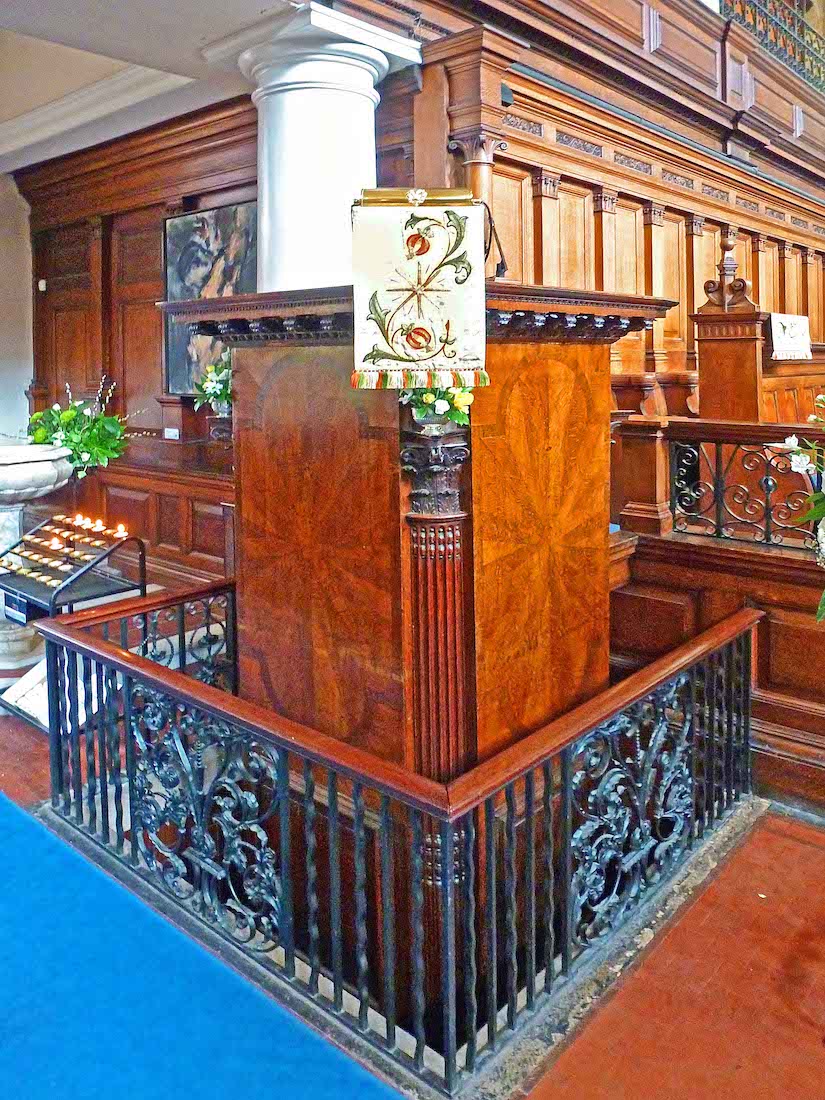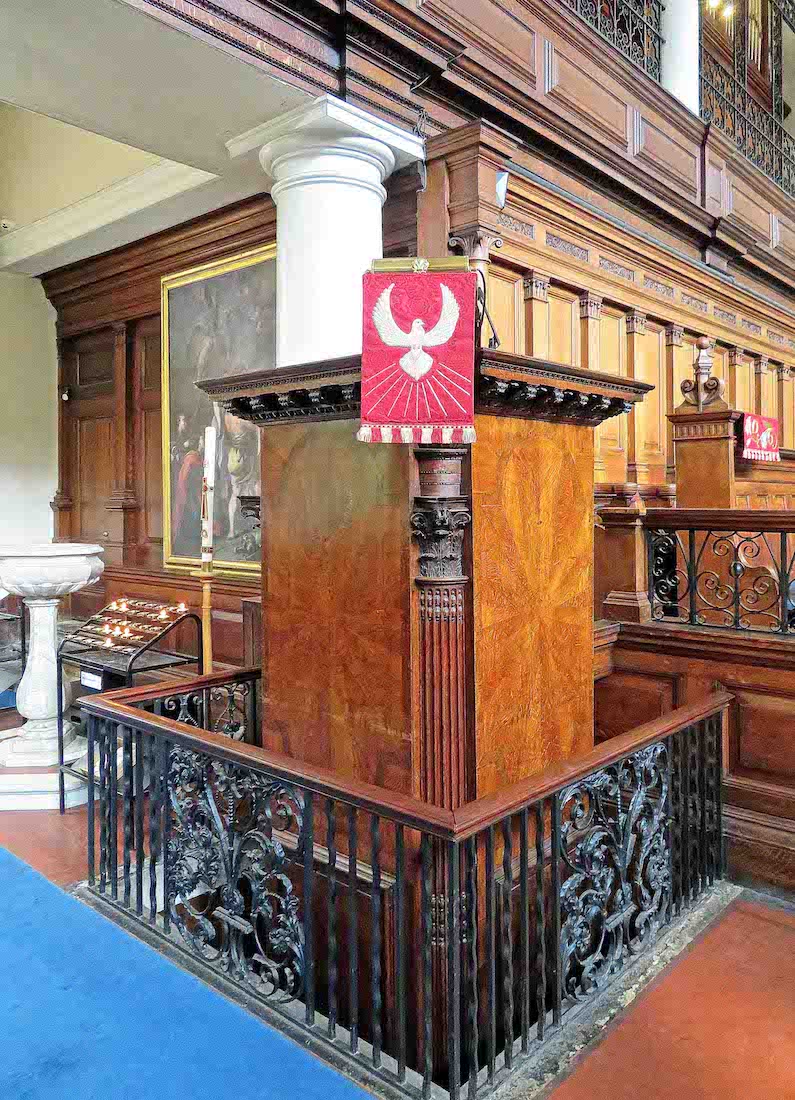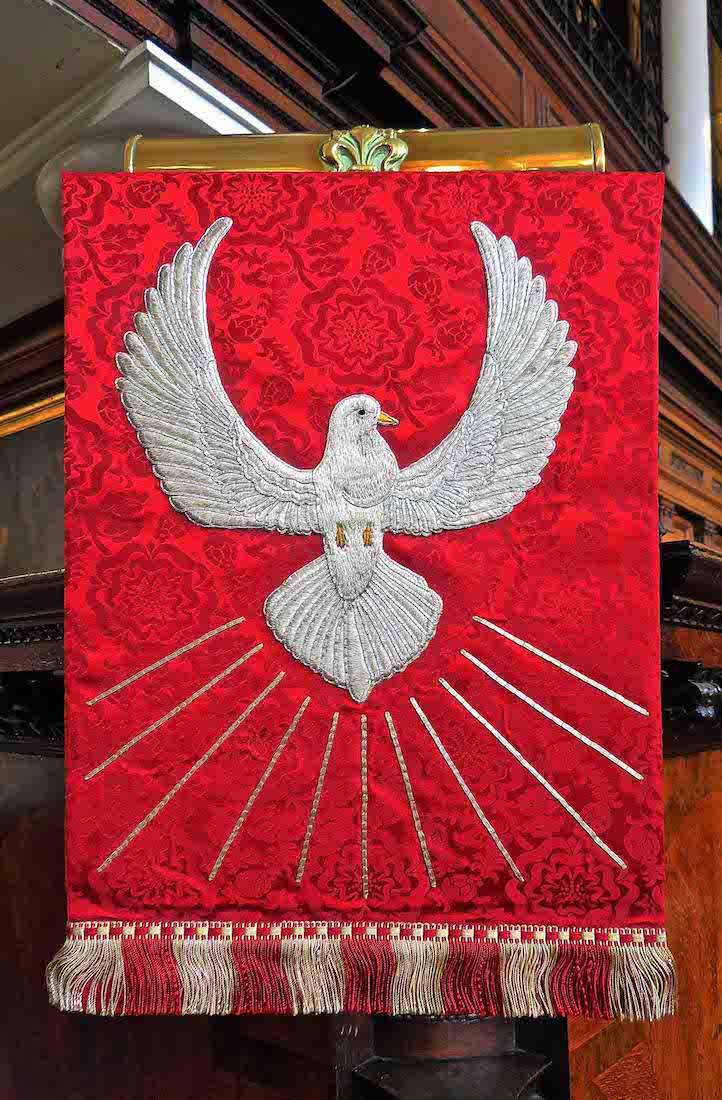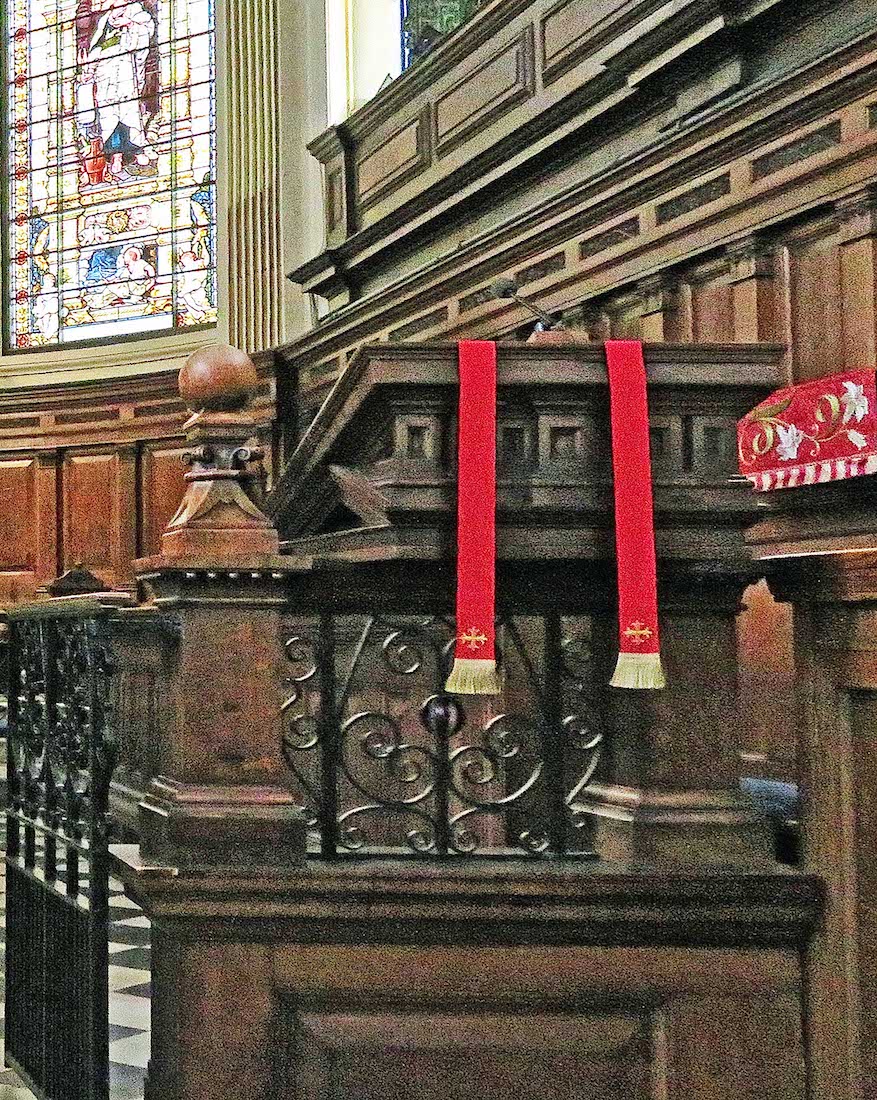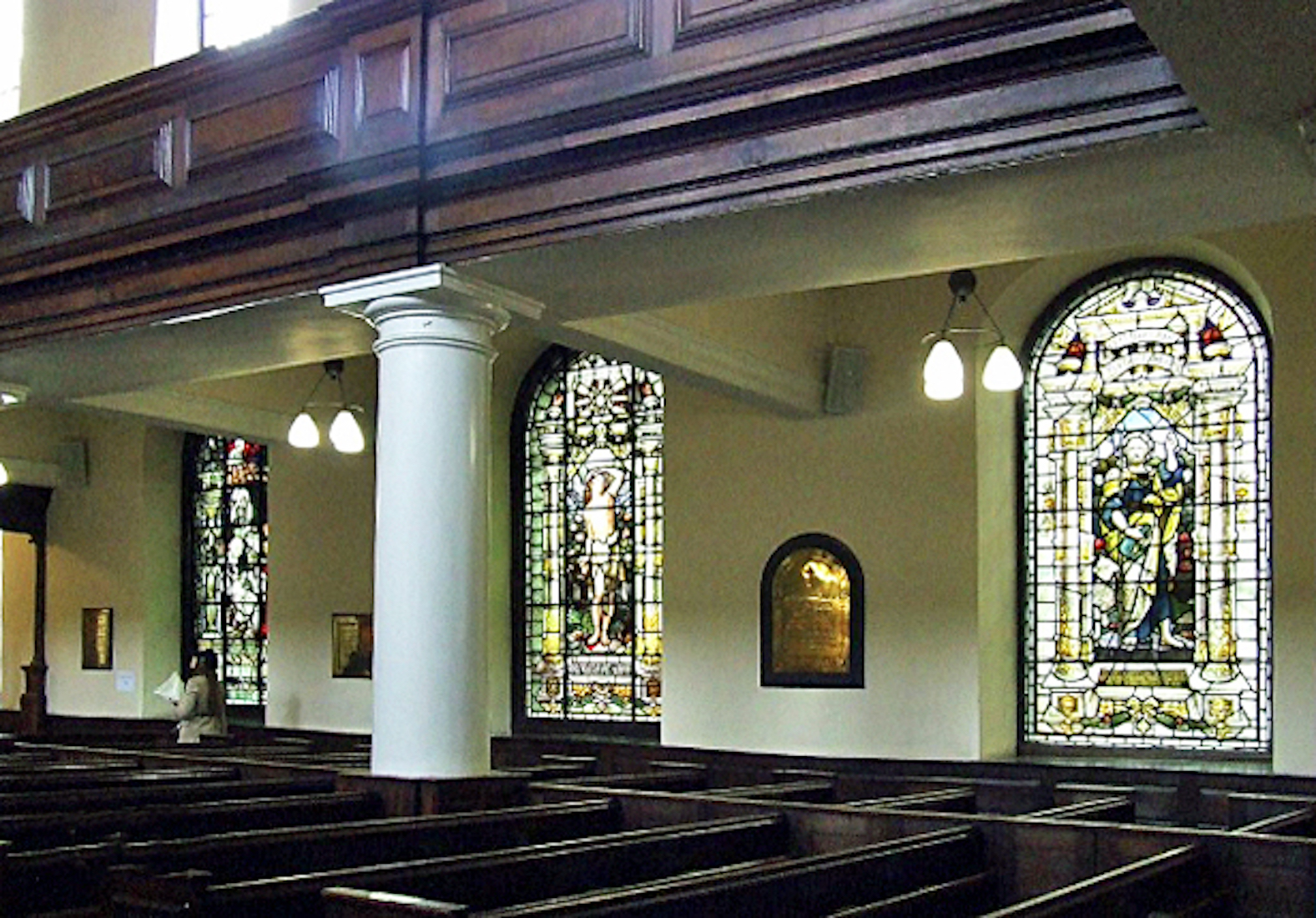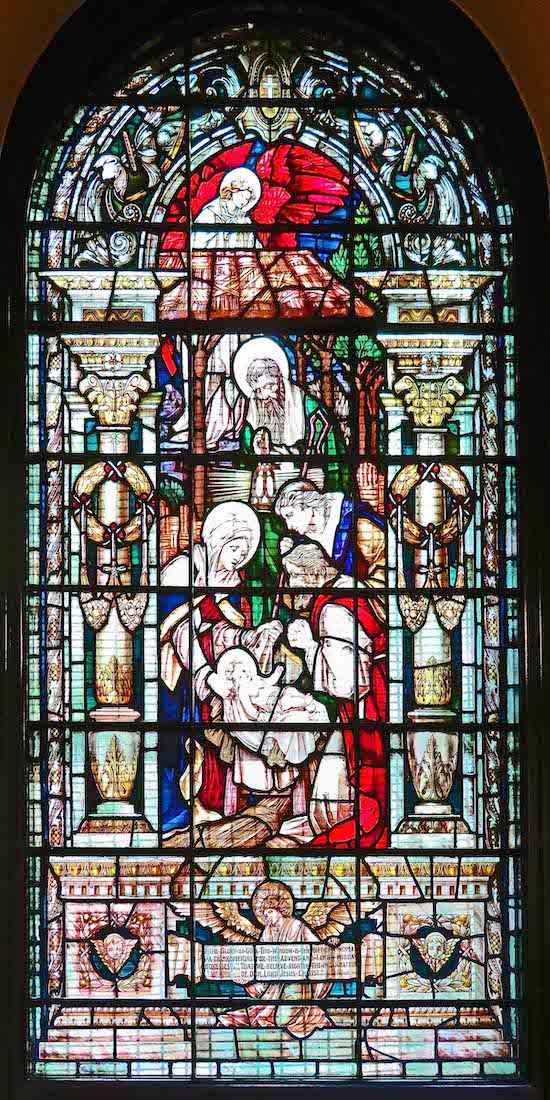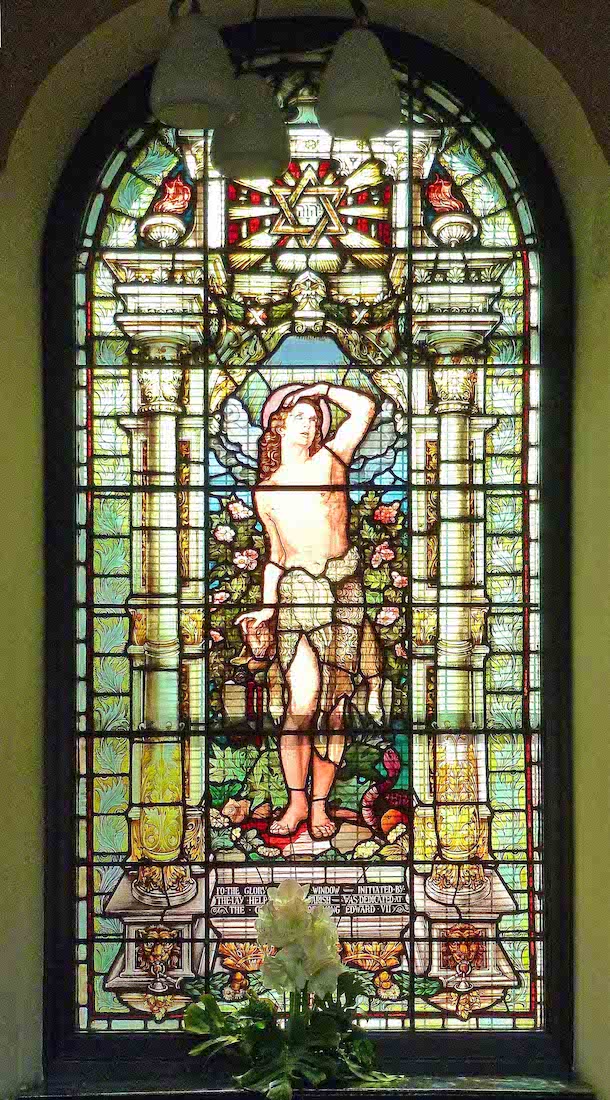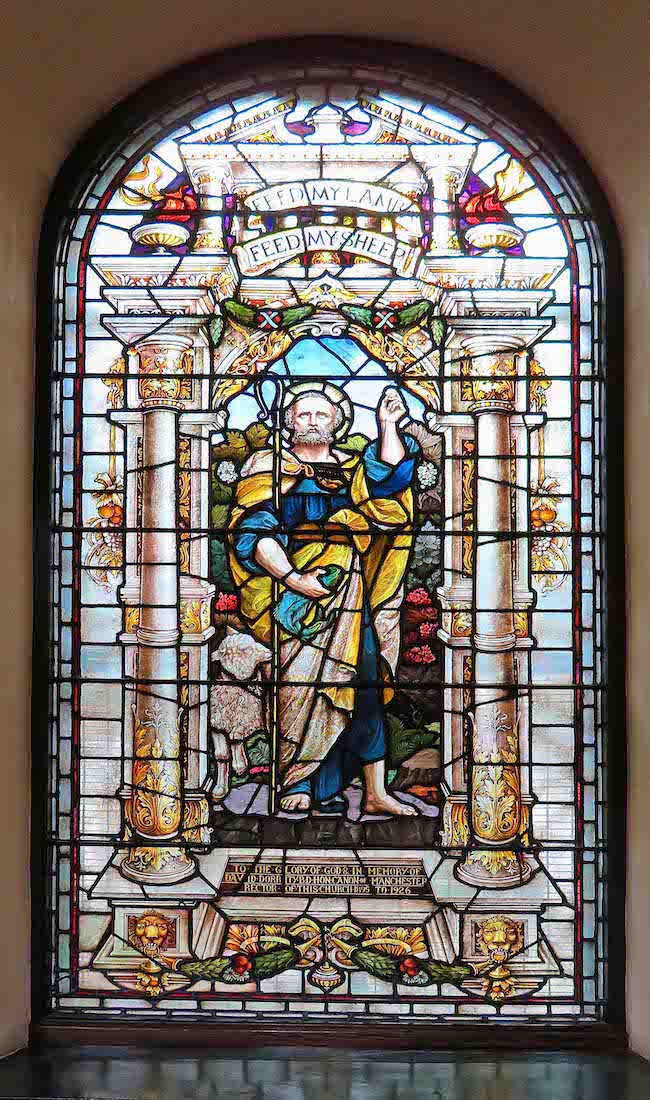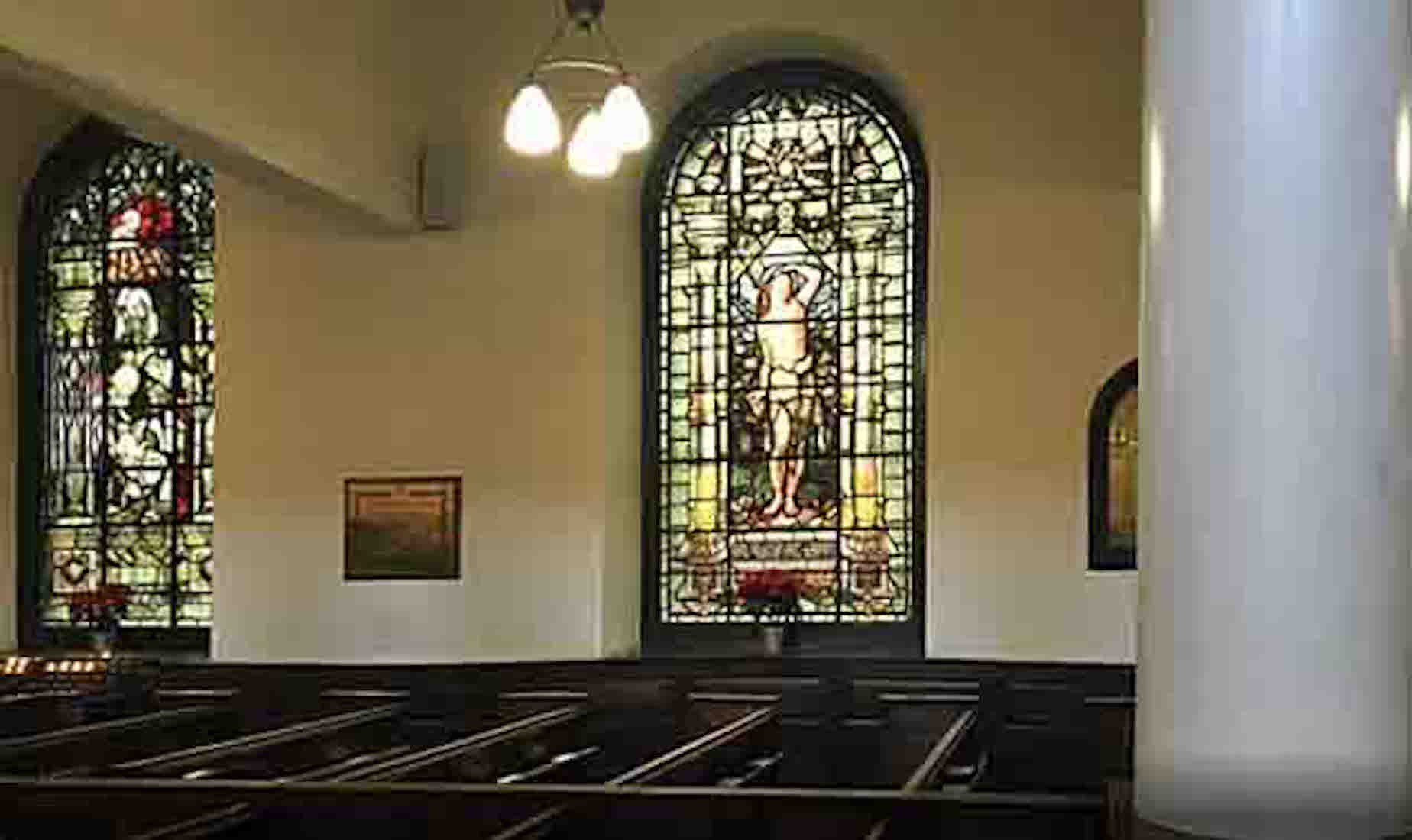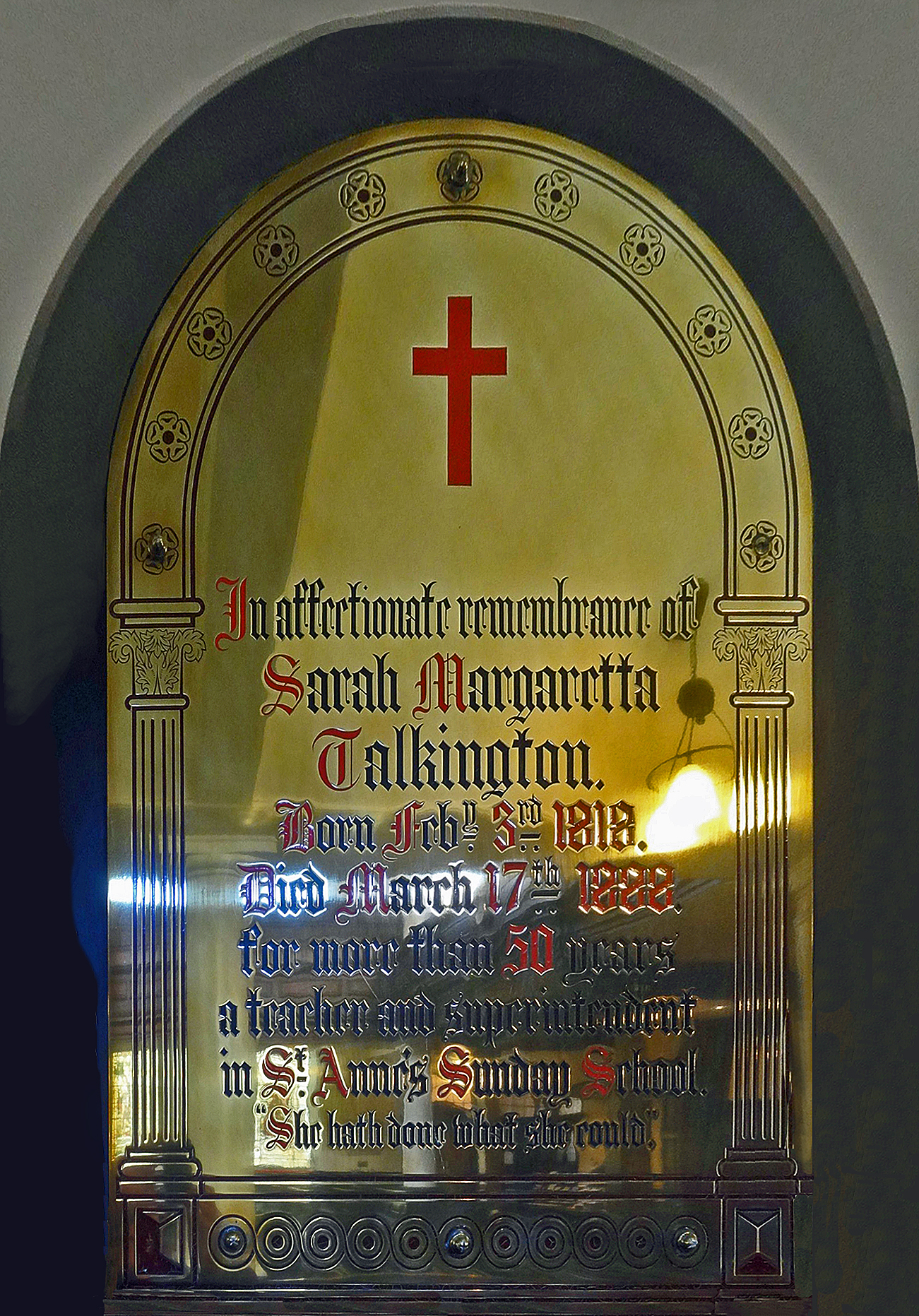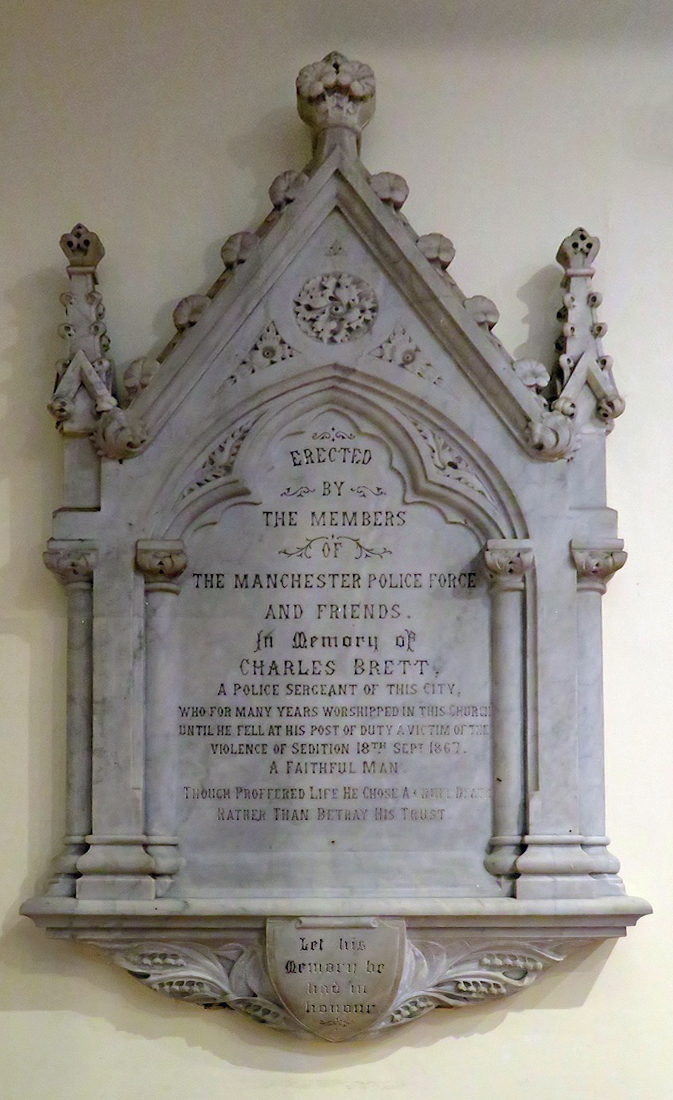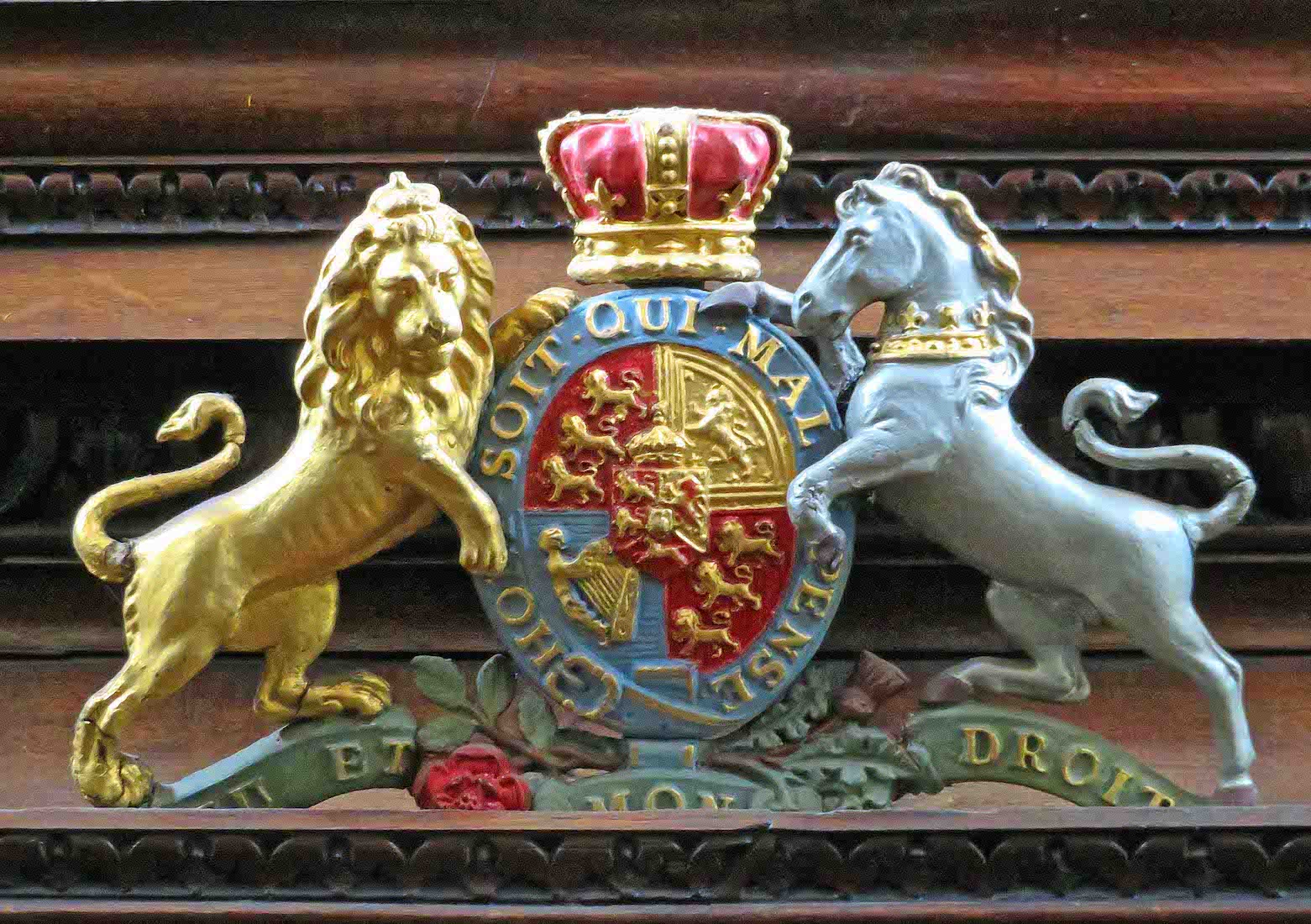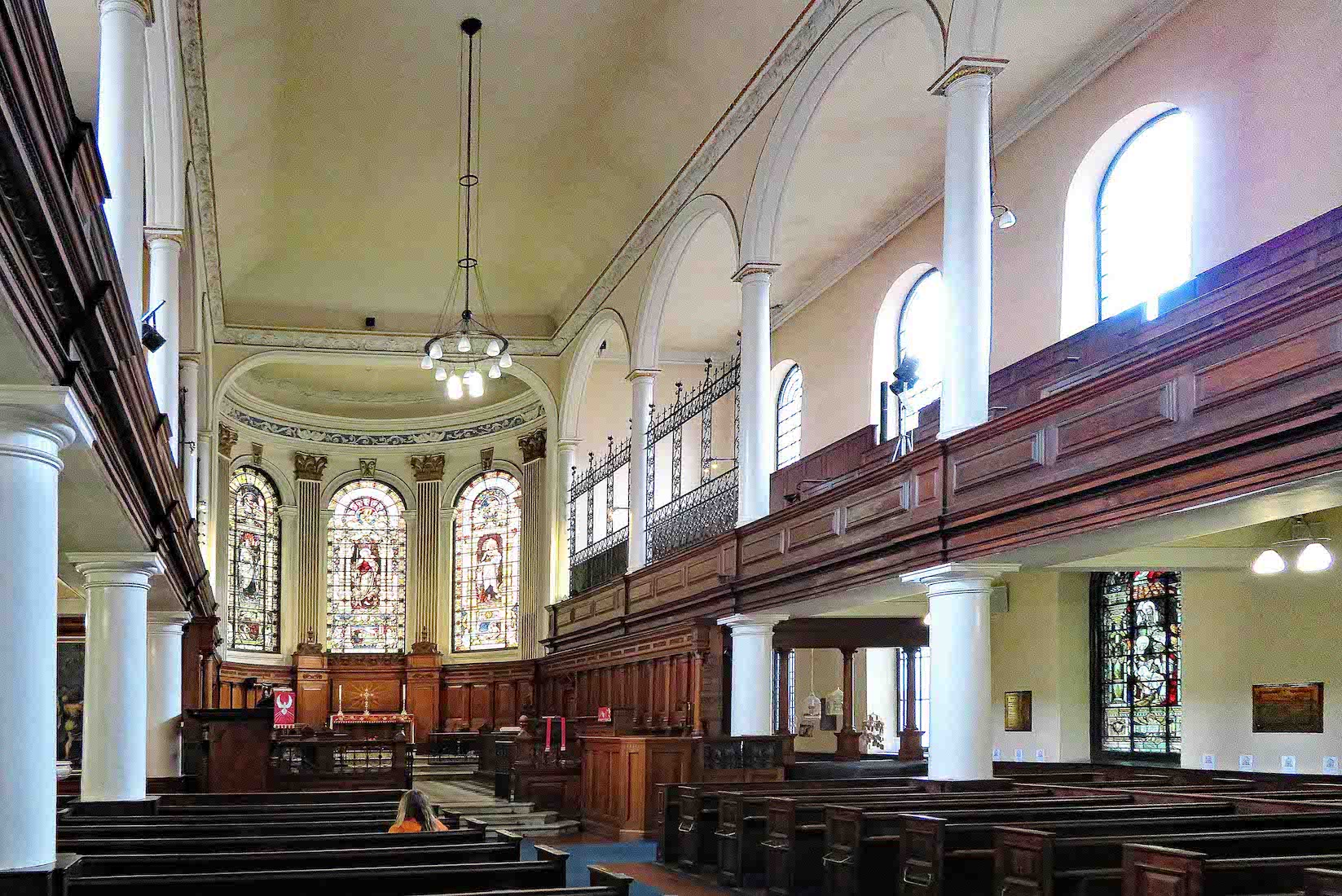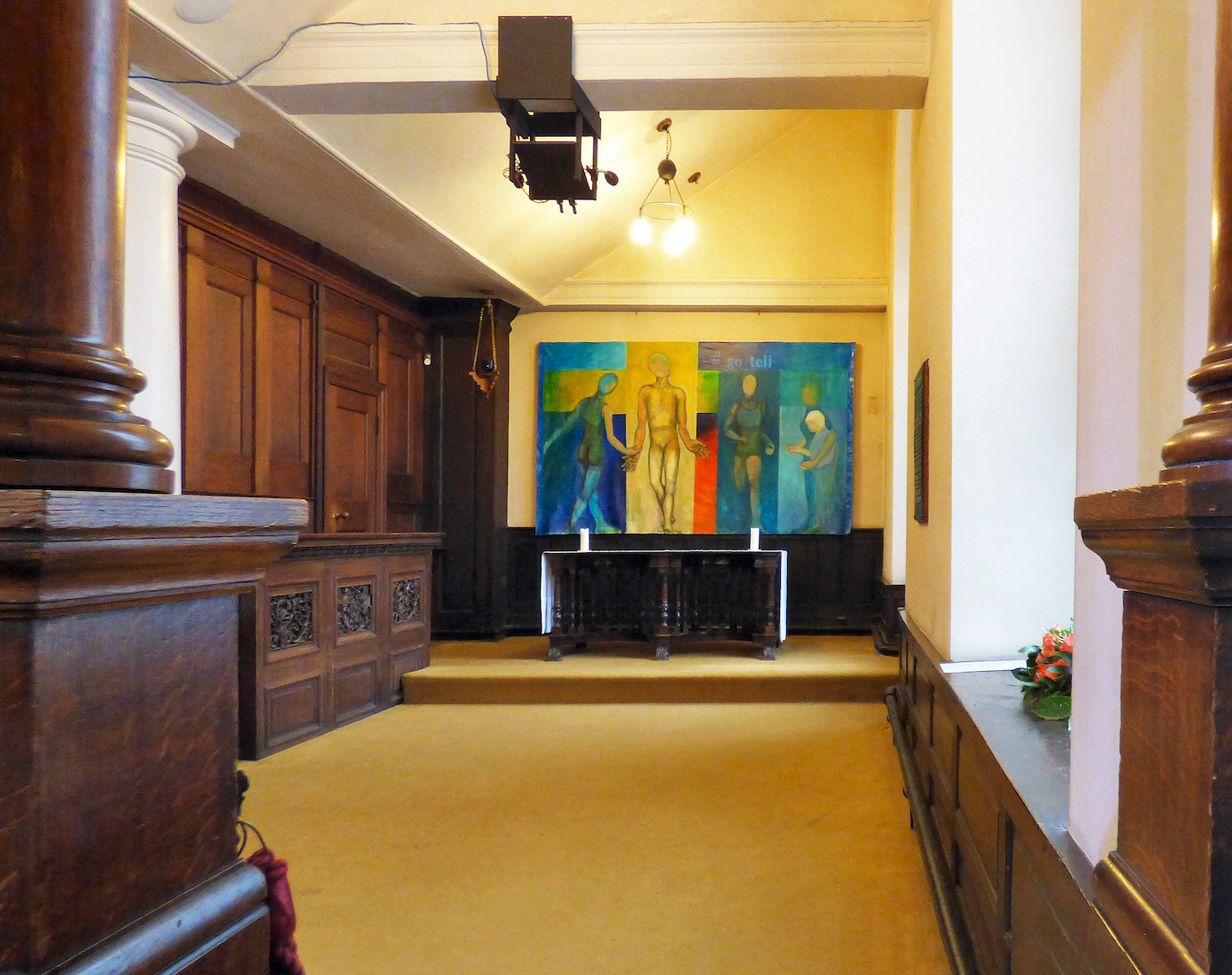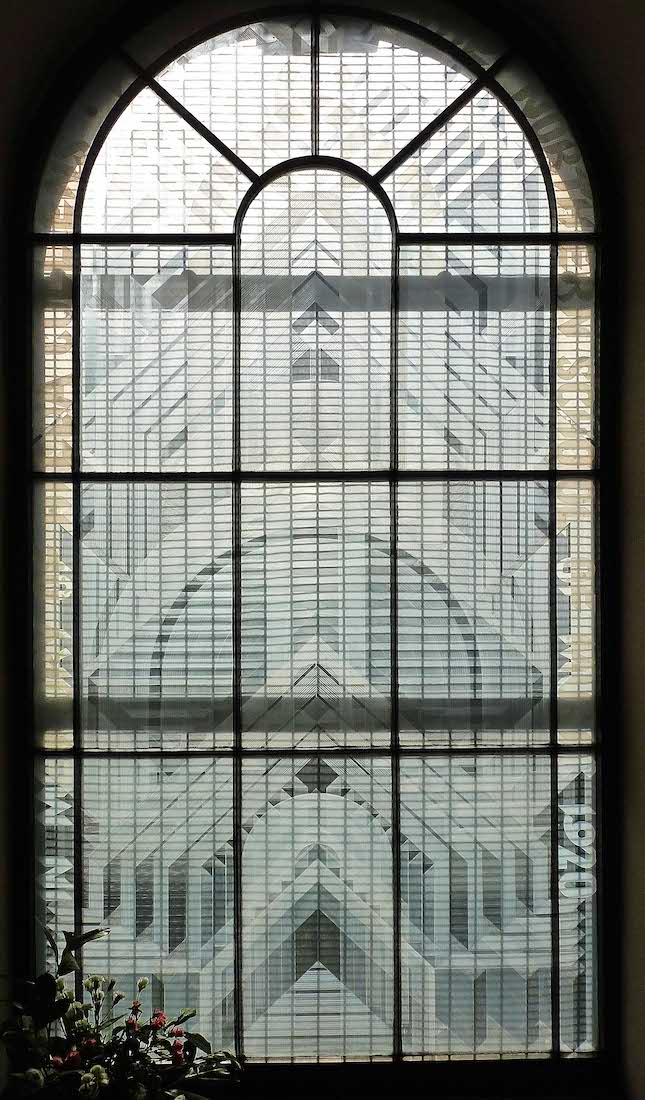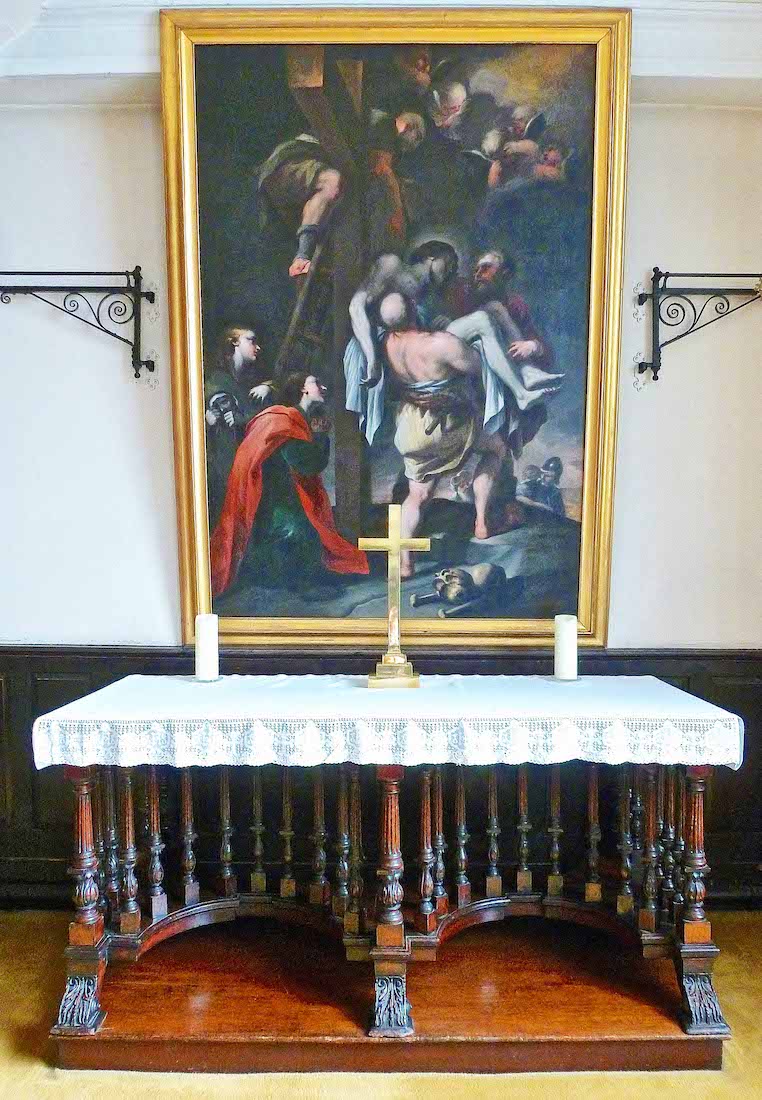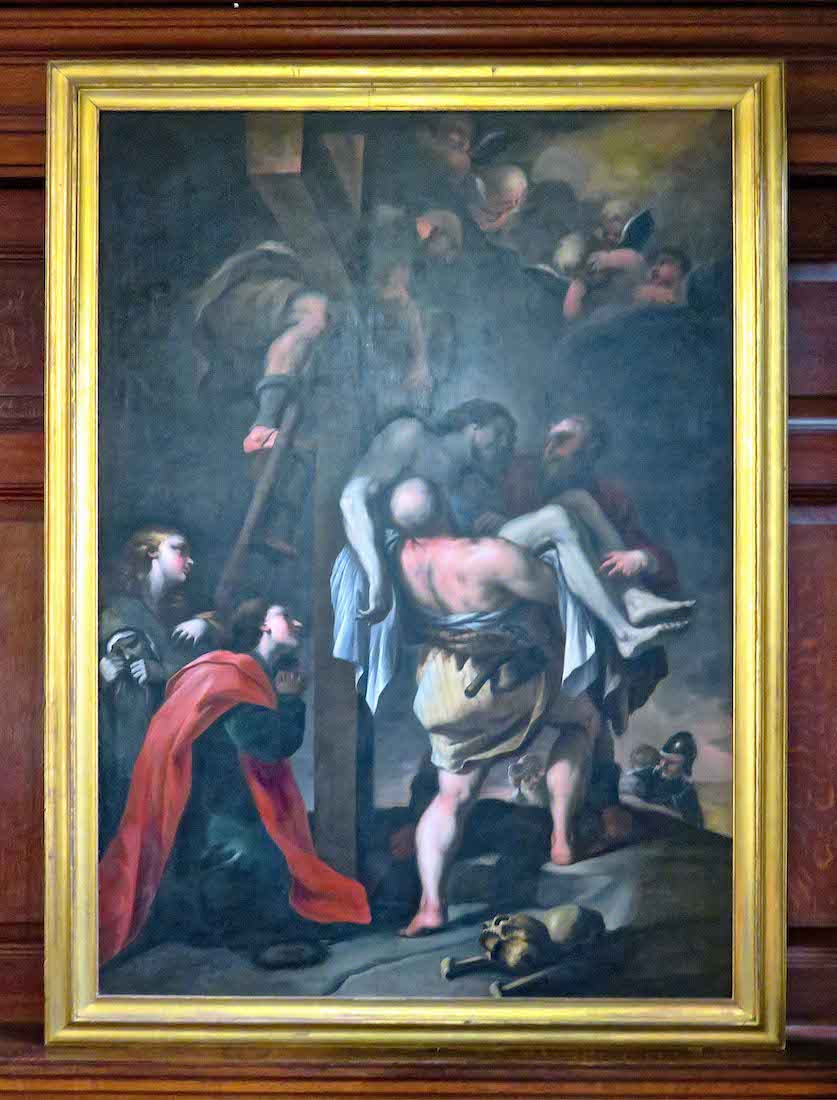
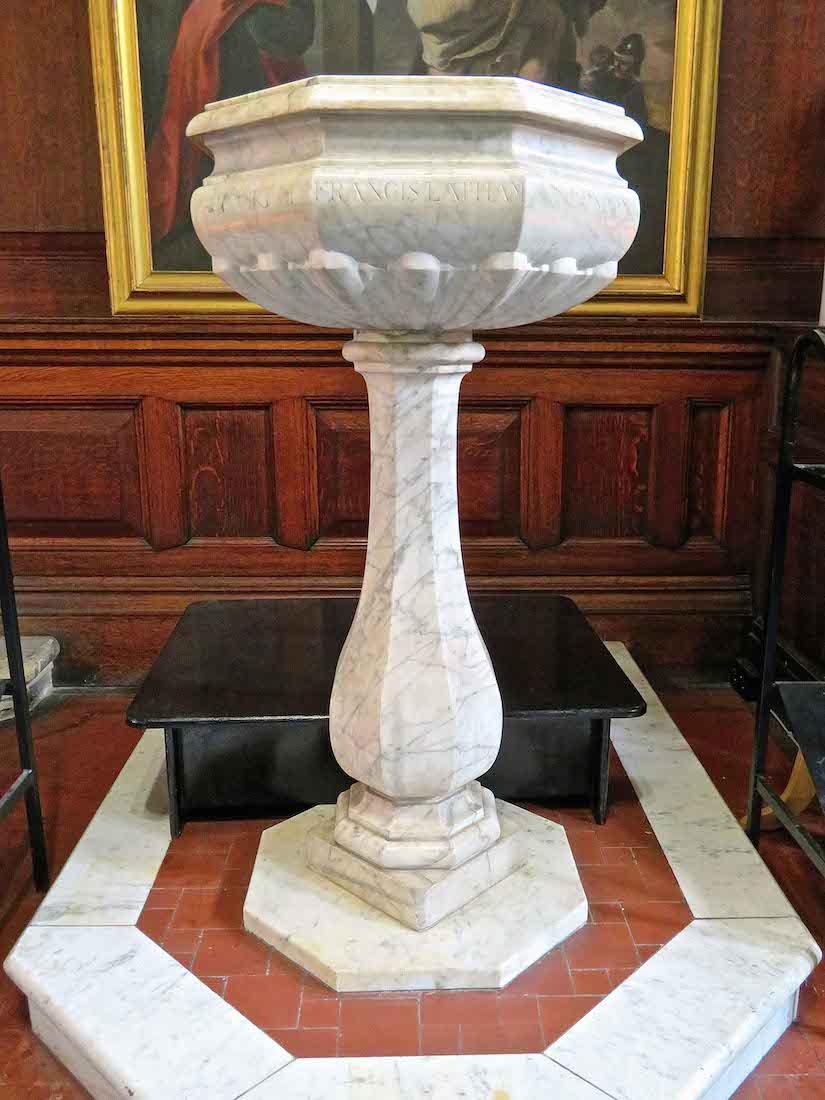
We are now at the front of the Northern set of pews. Between the North wall and the pulpit stands the baptismal font. Baptism is regarded as the rite of entry into the Church, and indeed as a symbol of entering the Christian faith. It is interesting visiting a Church on different occasions: sometimes the paintings get rearranged! INDEX
22. PASCHAL CANDLE AND FLOWERS
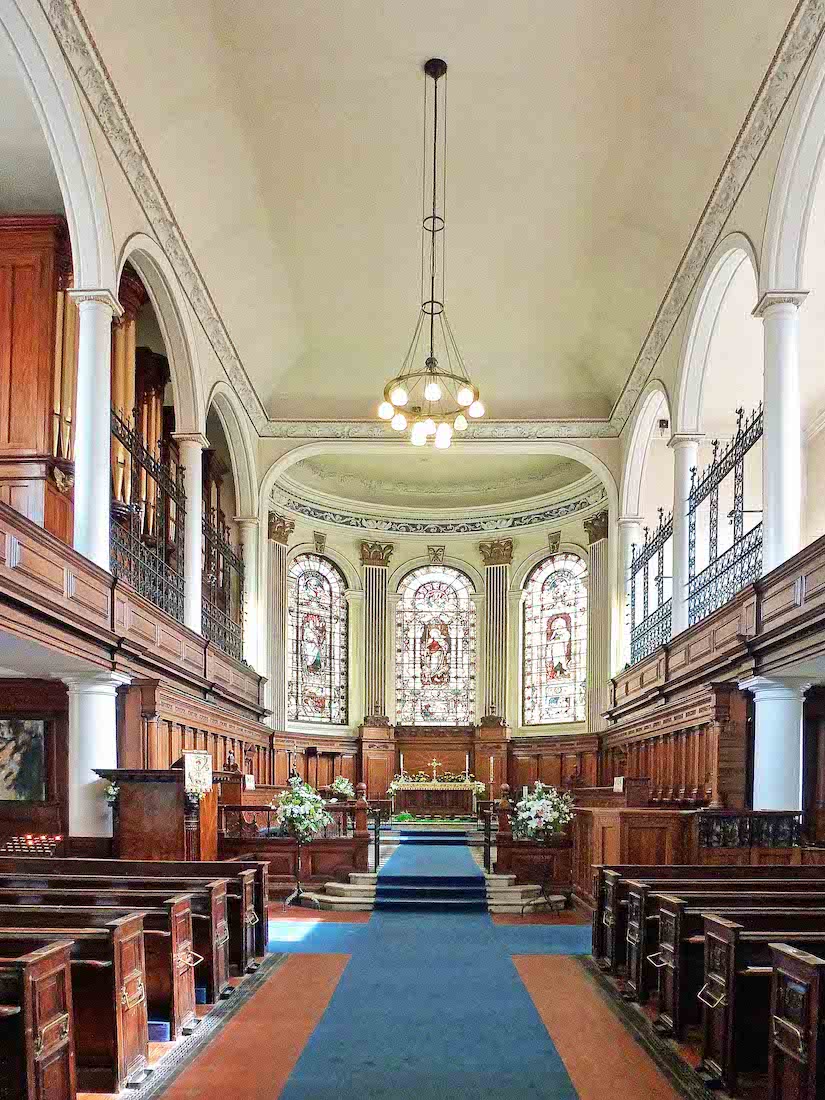

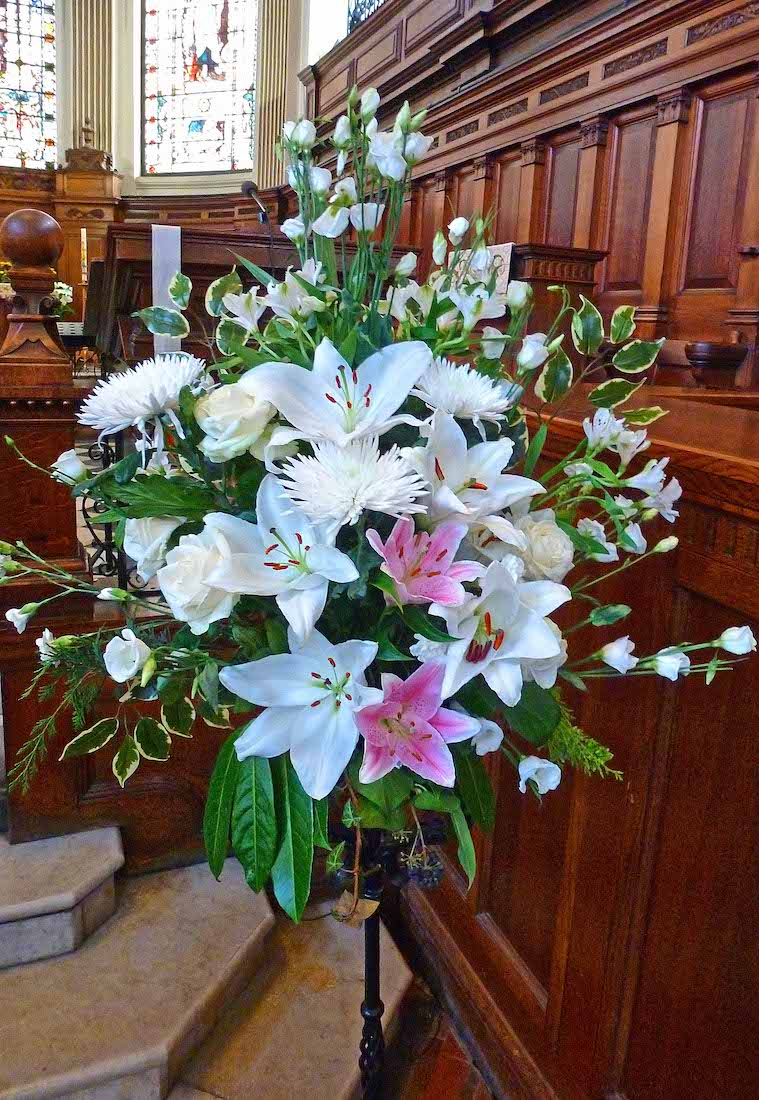
This view from the centre aisle shows how the pulpit is placed next to the font. In the distance we can see the Paschal candle standing next to the altar. It is another wandering item, often found near to the font. The Paschal candle speaks to us of Christ being the Light of the World. The flowers are lovely in this Church. White flowers like the Easter lily often symbolize purity and innocence. For Christians, this purity and innocence is associated with Christ. Lilies also have religious significance from being mentioned in the Bible, both in the Old and New Testaments. Lilies of the valley were mentioned by King Solomon several times and referenced by Christ in the Sermon on the Mount. The lily of the valley symbolizes the Advent of Christ and the purity of the Virgin Mary.
23. PULPIT
Most of the Church furnishings date from the 19th century restoration but fragments of the original pulpit and communion rail survive. The original pulpit was moved from its central position to give a clear view of the altar. It was a three-decker pulpit, but to avoid spoiling it by cutting it down, it was sunk in a pit in the floor enclosed with some of the original wrought iron Communion railing. The weekly sermons are preached from the pulpit, Sunday by Sunday.
24. PULPIT FALLS (!)
It is customary in Anglican and Catholic churches to follow the liturgical colours and seasons of the year. Here we are treated to Easter and Pentecost!
25. LECTERN
Across the aisle from the pulpit stands the lectern. This is the place from where the Scriptures are read.
26. SOUTHWEST VIEW
Looking across the lectern we see the windows and memorials of the South aisle – our next destination. [Photo Credit: Rosetta C., Gambia, Trip Advisor]
27. SOUTH WALL
The pattern is similar here to that of the North wall: beautiful windows with various memorials in between. [Photo Credit: santo t, TripAdvisor]
28. NATIVITY WINDOW
Beginning at the east end, this detailed Nativity window is by Heaton, Butler and Bayne. The angel at the bottom holds a scroll which reads: ‘To the Glory of God this window is the gift of a woman as a Thank offering for the advent and Lenten midday addresses. That we believe rightly the Incarnation of Our Lord Jesus Christ.’
29. CORONATION WINDOW
Next we come to the Coronation of King Edward Vll Window, 1902. This was designed by Frederic James Shields (1833-1911) and made by Heaton Butler & Bayne. The text reads: ‘To the Glory of God initiated by lay helpers of this parish, dedicated at the Coronation of King Edward VII.’
30. DORRITY WINDOW
The final window on this wall is the Dorrity Window – a memorial window to Canon David Dorrity. It is by Heaton, Butler & Bayne. The text reads: ‘To the Glory of God and in memory of David Dorrity BD, Hon Canon of Manchester, Rector of this Church 1895 to 1926.’
31. SOUTH WALL MEMORIALS
There are several memorials along the South wall.
32. TALKINGTON MEMORIAL
This fine memorial remembers Sarah Talkington (1818 – 1888) who was a teacher and Sunday School teacher for more than 50 years in St Ann’s Church. It is not often that Sunday School teachers get remembered in this way. • There are several other memorials on this wall, and if anyone has a good photograph of one, I would be happy to add to this record. There are in fact a number of other memorials to be found in the Tower Room, and we proceed there now.
33. TOWER ROOM : BRETT MEMORIAL
This memorial (#1) is to police sergeant Charles Brett, who died in 1867.
The Manchester Martyrs – William Philip Allen, Michael Larkin, and Michael O'Brien – were members of the Irish Republican Brotherhood, an organisation dedicated to ending British rule in Ireland. They were executed for the murder of a police officer in Manchester in 1867, during an incident that became known as the Manchester Outrages. The trio were members of a group of 30–40 Fenians who attacked a horse-drawn police van transporting two arrested leaders of the Brotherhood, Thomas Kelly and Timothy Deasy, to Belle Vue Gaol. Police Sergeant Charles Brett, travelling inside with the keys, was shot and killed as the attackers attempted to force the van open by blowing the lock. Kelly and Deasy were released after another prisoner in the van took the keys from Brett’s body and passed them to the group outside through a ventilation grill; the pair were never recaptured, despite an extensive search. Two others were also charged and found guilty of Brett's murder, Thomas Maguire and Edward O'Meagher Condon, but their death sentences were overturned: O'Meagher Condon through the intercession of the United States government – he was an American citizen – and Maguire because the evidence given against him was considered unsatisfactory. Allen, Larkin, and O'Brien were publicly hanged on a temporary structure built on the wall of Salford Gaol, on 23 November 1867, in front of a crowd of 8,000–10,000. Brett was the first Manchester Police officer to be killed on duty.
https://en.wikipedia.org/wiki/Manchester_Martyrs
Further plaques and memorials in the Tower Room can be found here.
34. WEST GALLERY
We return to the nave to admire the fine wooden gallery. We notice too the large clear clerestory windows which provide such good lighting to the nave. Various Regimental colours are displayed across the back wall, and there is a Royal coat of armst beneath the clock.
35. ROYAL COAT OF ARMS
Once King Henry VIII had placed himself as head of a new church, the Church of England, then it became custom to display the Royal Arms inside parish churches up and down England. It was a very visual way for the sovereign to put themselves in front of their subjects week in week out and to remind them who now had authority over the church. It was also a reminder to any papists in the congregation that the Pope was no longer the head of the church but the King or Queen was.
36. ACROSS THE NAVE
We next turn to the East end of the Church, first proceeding to the Lady Chapel to the right of the sanctuary.
37. LADY CHAPEL
The Lady Chapel appears to be a multi-purpose room. Sometimes it is set up as a ‘Lady Chapel’ but other times it is more like a Church hall, used for exhibitions, functions or Church meetings. [Photo Credit: CCL Geograph by Gerald]
38. LADY CHAPEL WINDOW
There are two identical Art Deco etched glass windows in the Lady Chapel. They are a memorial to Hilda Collens who founded the Northern School of Music in 1920. They were given by the Royal Northern College of Music. The abstract design has been called ‘frozen music’.
39. CHAPEL ALTAR AND PAINTING
The Lady Chapel has an attractive altar table with three supports across. This is the original altar table given by Lady Ann Bland when St Ann’s was opened in 1712. Behind is a painting called ‘Descent from the Cross’. This painting was bought in Italy at the beginning of the 19th century and originally installed in St Peter’s church, transferred to St James’s church when St Peter’s was closed in 1906 and given to St Ann’s when St James’s was also closed in 1928. It is painted in the style of 16th century Italian painter, Annibal Carracci (1561-1609). The painting shows Jesus’s body being lifted down from the cross, mourned by His mother, who is supported by Mary Magdalene and Mary the wife of Cleophas, while the centurion and the High Priest can be seen in the background.


